Mehmet Fatih Amasyali
Scaling BERT Models for Turkish Automatic Punctuation and Capitalization Correction
Dec 03, 2024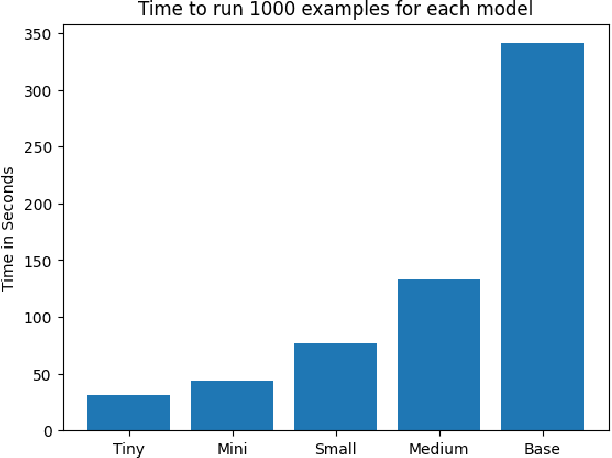
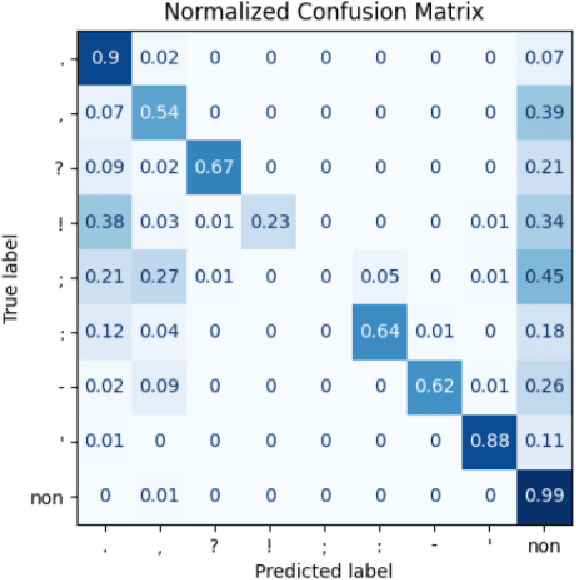
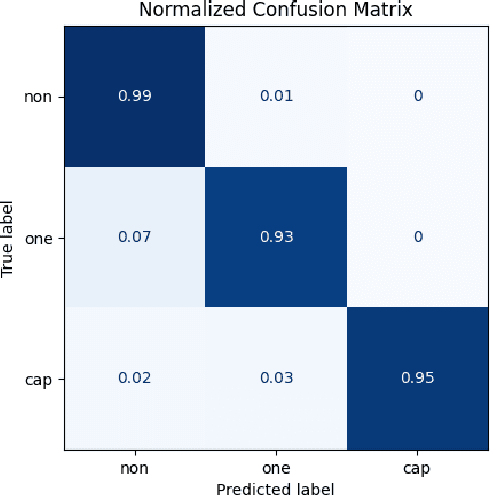
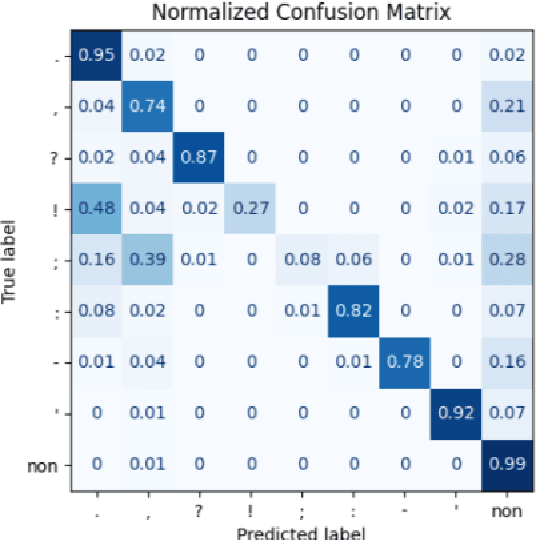
Abstract:This paper investigates the effectiveness of BERT based models for automated punctuation and capitalization corrections in Turkish texts across five distinct model sizes. The models are designated as Tiny, Mini, Small, Medium, and Base. The design and capabilities of each model are tailored to address the specific challenges of the Turkish language, with a focus on optimizing performance while minimizing computational overhead. The study presents a systematic comparison of the performance metrics precision, recall, and F1 score of each model, offering insights into their applicability in diverse operational contexts. The results demonstrate a significant improvement in text readability and accuracy as model size increases, with the Base model achieving the highest correction precision. This research provides a comprehensive guide for selecting the appropriate model size based on specific user needs and computational resources, establishing a framework for deploying these models in real-world applications to enhance the quality of written Turkish.
* 2024 Innovations in Intelligent Systems and Applications Conference (ASYU)
LegalTurk Optimized BERT for Multi-Label Text Classification and NER
Jun 30, 2024



Abstract:The introduction of the Transformer neural network, along with techniques like self-supervised pre-training and transfer learning, has paved the way for advanced models like BERT. Despite BERT's impressive performance, opportunities for further enhancement exist. To our knowledge, most efforts are focusing on improving BERT's performance in English and in general domains, with no study specifically addressing the legal Turkish domain. Our study is primarily dedicated to enhancing the BERT model within the legal Turkish domain through modifications in the pre-training phase. In this work, we introduce our innovative modified pre-training approach by combining diverse masking strategies. In the fine-tuning task, we focus on two essential downstream tasks in the legal domain: name entity recognition and multi-label text classification. To evaluate our modified pre-training approach, we fine-tuned all customized models alongside the original BERT models to compare their performance. Our modified approach demonstrated significant improvements in both NER and multi-label text classification tasks compared to the original BERT model. Finally, to showcase the impact of our proposed models, we trained our best models with different corpus sizes and compared them with BERTurk models. The experimental results demonstrate that our innovative approach, despite being pre-trained on a smaller corpus, competes with BERTurk.
Data Augmentation with In-Context Learning and Comparative Evaluation in Math Word Problem Solving
Apr 05, 2024Abstract:Math Word Problem (MWP) solving presents a challenging task in Natural Language Processing (NLP). This study aims to provide MWP solvers with a more diverse training set, ultimately improving their ability to solve various math problems. We propose several methods for data augmentation by modifying the problem texts and equations, such as synonym replacement, rule-based: question replacement, and rule based: reversing question methodologies over two English MWP datasets. This study extends by introducing a new in-context learning augmentation method, employing the Llama-7b language model. This approach involves instruction-based prompting for rephrasing the math problem texts. Performance evaluations are conducted on 9 baseline models, revealing that augmentation methods outperform baseline models. Moreover, concatenating examples generated by various augmentation methods further improves performance.
Advancing NLP Models with Strategic Text Augmentation: A Comprehensive Study of Augmentation Methods and Curriculum Strategies
Feb 14, 2024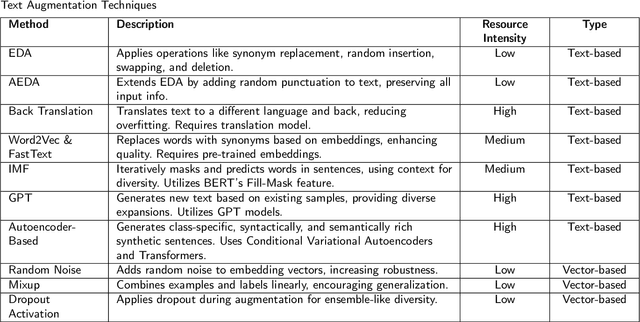
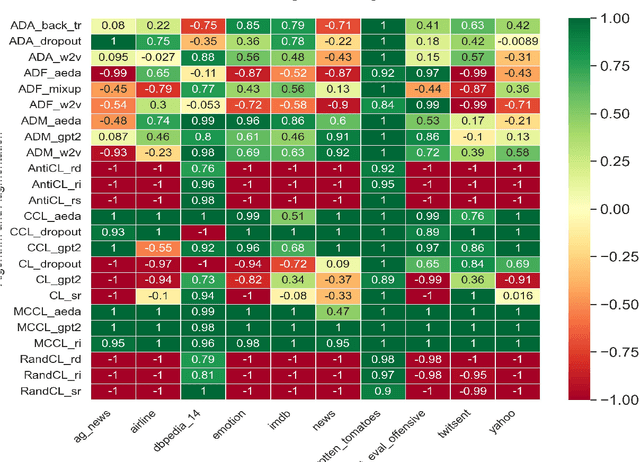

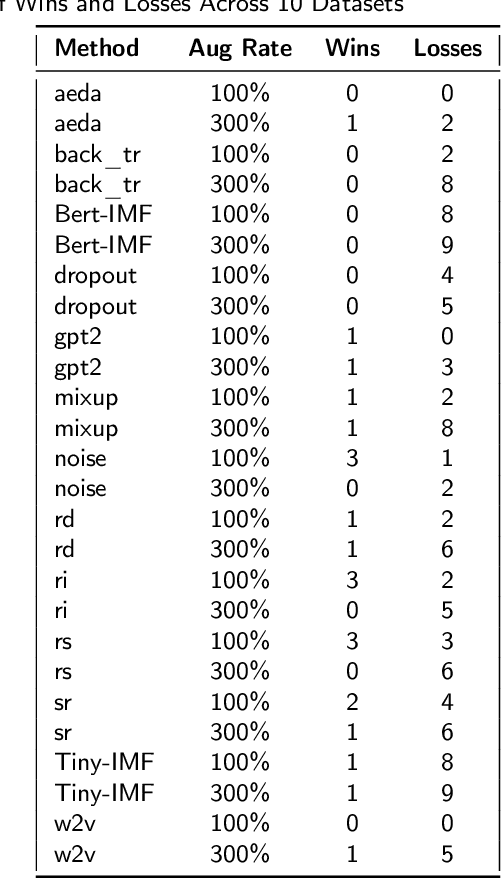
Abstract:This study conducts a thorough evaluation of text augmentation techniques across a variety of datasets and natural language processing (NLP) tasks to address the lack of reliable, generalized evidence for these methods. It examines the effectiveness of these techniques in augmenting training sets to improve performance in tasks such as topic classification, sentiment analysis, and offensive language detection. The research emphasizes not only the augmentation methods, but also the strategic order in which real and augmented instances are introduced during training. A major contribution is the development and evaluation of Modified Cyclical Curriculum Learning (MCCL) for augmented datasets, which represents a novel approach in the field. Results show that specific augmentation methods, especially when integrated with MCCL, significantly outperform traditional training approaches in NLP model performance. These results underscore the need for careful selection of augmentation techniques and sequencing strategies to optimize the balance between speed and quality improvement in various NLP tasks. The study concludes that the use of augmentation methods, especially in conjunction with MCCL, leads to improved results in various classification tasks, providing a foundation for future advances in text augmentation strategies in NLP.
Investigating Semi-Supervised Learning Algorithms in Text Datasets
Jan 07, 2024Abstract:Using large training datasets enhances the generalization capabilities of neural networks. Semi-supervised learning (SSL) is useful when there are few labeled data and a lot of unlabeled data. SSL methods that use data augmentation are most successful for image datasets. In contrast, texts do not have consistent augmentation methods as images. Consequently, methods that use augmentation are not as effective in text data as they are in image data. In this study, we compared SSL algorithms that do not require augmentation; these are self-training, co-training, tri-training, and tri-training with disagreement. In the experiments, we used 4 different text datasets for different tasks. We examined the algorithms from a variety of perspectives by asking experiment questions and suggested several improvements. Among the algorithms, tri-training with disagreement showed the closest performance to the Oracle; however, performance gap shows that new semi-supervised algorithms or improvements in existing methods are needed.
* Innovations in Intelligent Systems and Applications Conference (ASYU)
Iterative Mask Filling: An Effective Text Augmentation Method Using Masked Language Modeling
Jan 03, 2024Abstract:Data augmentation is an effective technique for improving the performance of machine learning models. However, it has not been explored as extensively in natural language processing (NLP) as it has in computer vision. In this paper, we propose a novel text augmentation method that leverages the Fill-Mask feature of the transformer-based BERT model. Our method involves iteratively masking words in a sentence and replacing them with language model predictions. We have tested our proposed method on various NLP tasks and found it to be effective in many cases. Our results are presented along with a comparison to existing augmentation methods. Experimental results show that our proposed method significantly improves performance, especially on topic classification datasets.
* Published in International Conference on Advanced Engineering, Technology and Applications (ICAETA 2023). The final version is available online at https://link.springer.com/chapter/10.1007/978-3-031-50920-9_35
From Text to Multimodal: A Comprehensive Survey of Adversarial Example Generation in Question Answering Systems
Dec 26, 2023Abstract:Integrating adversarial machine learning with Question Answering (QA) systems has emerged as a critical area for understanding the vulnerabilities and robustness of these systems. This article aims to comprehensively review adversarial example-generation techniques in the QA field, including textual and multimodal contexts. We examine the techniques employed through systematic categorization, providing a comprehensive, structured review. Beginning with an overview of traditional QA models, we traverse the adversarial example generation by exploring rule-based perturbations and advanced generative models. We then extend our research to include multimodal QA systems, analyze them across various methods, and examine generative models, seq2seq architectures, and hybrid methodologies. Our research grows to different defense strategies, adversarial datasets, and evaluation metrics and illustrates the comprehensive literature on adversarial QA. Finally, the paper considers the future landscape of adversarial question generation, highlighting potential research directions that can advance textual and multimodal QA systems in the context of adversarial challenges.
Developing and Evaluating Tiny to Medium-Sized Turkish BERT Models
Jul 26, 2023
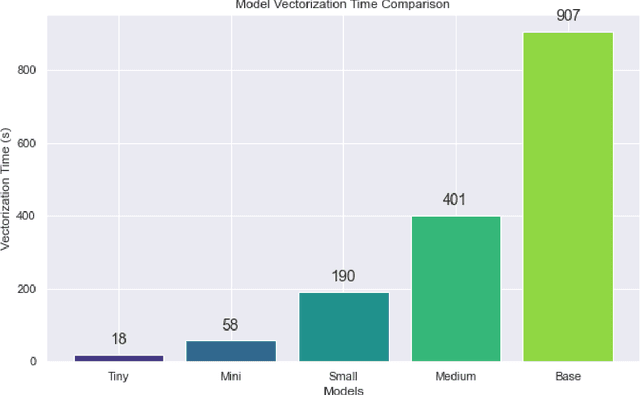
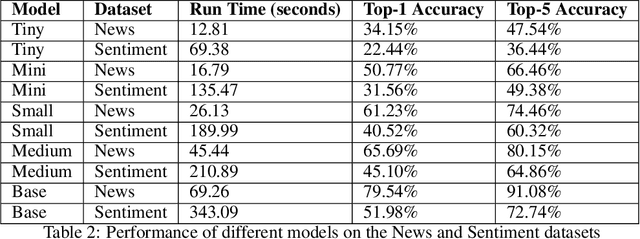
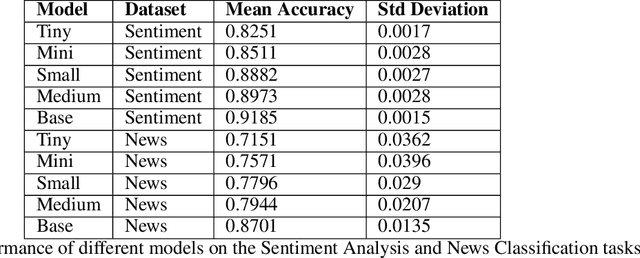
Abstract:This study introduces and evaluates tiny, mini, small, and medium-sized uncased Turkish BERT models, aiming to bridge the research gap in less-resourced languages. We trained these models on a diverse dataset encompassing over 75GB of text from multiple sources and tested them on several tasks, including mask prediction, sentiment analysis, news classification, and, zero-shot classification. Despite their smaller size, our models exhibited robust performance, including zero-shot task, while ensuring computational efficiency and faster execution times. Our findings provide valuable insights into the development and application of smaller language models, especially in the context of the Turkish language.
Reviewer Assignment Problem: A Systematic Review of the Literature
Apr 04, 2023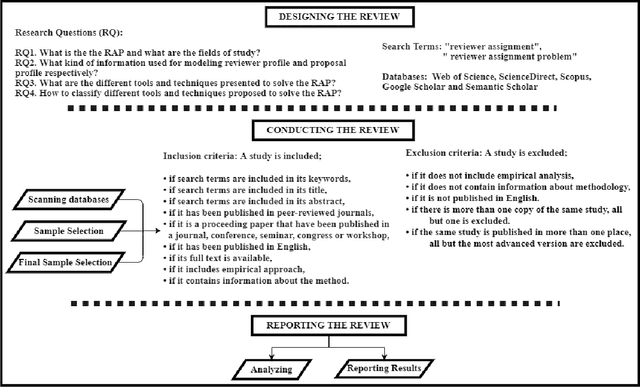
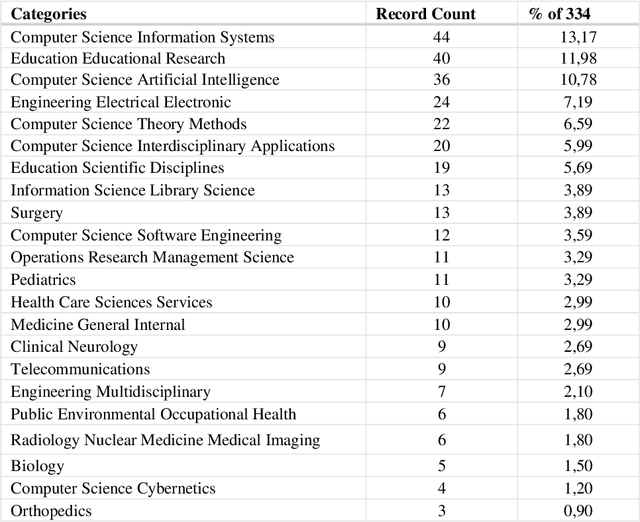
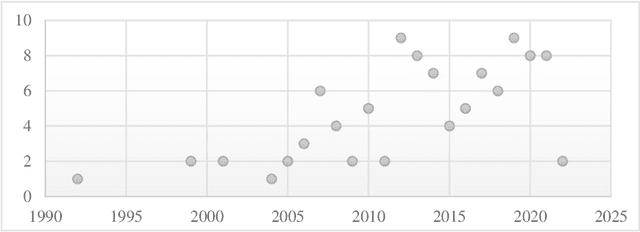
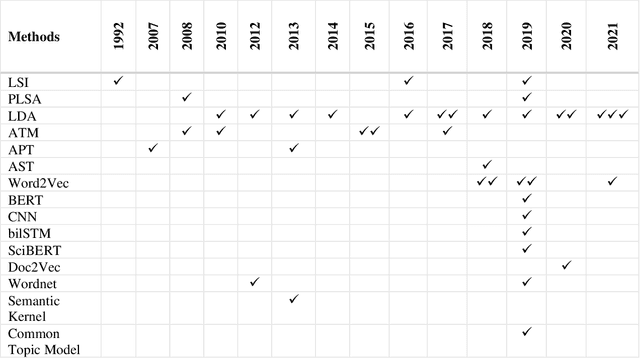
Abstract:Appropriate reviewer assignment significantly impacts the quality of proposal evaluation, as accurate and fair reviews are contingent on their assignment to relevant reviewers. The crucial task of assigning reviewers to submitted proposals is the starting point of the review process and is also known as the reviewer assignment problem (RAP). Due to the obvious restrictions of manual assignment, journal editors, conference organizers, and grant managers demand automatic reviewer assignment approaches. Many studies have proposed assignment solutions in response to the demand for automated procedures since 1992. The primary objective of this survey paper is to provide scholars and practitioners with a comprehensive overview of available research on the RAP. To achieve this goal, this article presents an in-depth systematic review of 103 publications in the field of reviewer assignment published in the past three decades and available in the Web of Science, Scopus, ScienceDirect, Google Scholar, and Semantic Scholar databases. This review paper classified and discussed the RAP approaches into two broad categories and numerous subcategories based on their underlying techniques. Furthermore, potential future research directions for each category are presented. This survey shows that the research on the RAP is becoming more significant and that more effort is required to develop new approaches and a framework.
* 67 pages, 11 figures
Transformers as Neural Augmentors: Class Conditional Sentence Generation via Variational Bayes
May 19, 2022



Abstract:Data augmentation methods for Natural Language Processing tasks are explored in recent years, however they are limited and it is hard to capture the diversity on sentence level. Besides, it is not always possible to perform data augmentation on supervised tasks. To address those problems, we propose a neural data augmentation method, which is a combination of Conditional Variational Autoencoder and encoder-decoder Transformer model. While encoding and decoding the input sentence, our model captures the syntactic and semantic representation of the input language with its class condition. Following the developments in the past years on pre-trained language models, we train and evaluate our models on several benchmarks to strengthen the downstream tasks. We compare our method with 3 different augmentation techniques. The presented results show that, our model increases the performance of current models compared to other data augmentation techniques with a small amount of computation power.
 Add to Chrome
Add to Chrome Add to Firefox
Add to Firefox Add to Edge
Add to Edge